

16 Tips For a Successful Satellite Media Tour
by Alex Hinojosa | Mar 9, 2016 | Marketing , Media Relations , Traditional Media
A satellite media tour (SMT) remains an effective public relations tactic that can often generate high-quality results that matter to your clients. However, an SMT in 2016 is very different from 10 years ago, back when we all had MySpace accounts. Today, across the PR services spectrum, it’s all about the PESO—the Paid-Earned-Shared-Owned model—and the same is true for an SMT.
Because things have changed so much over the last decade or so, I gathered our experienced team of television, radio, Internet and PR experts together to get their takes on what makes a mega client win…and mega migraine mistakes. Read on for their 16 tips:
- Make sure your spokesperson didn’t do a SMT last month. This can directly impact the number and quality of bookings for your tour and it’s a more common problem than you might suspect. Make sure you ask your spokesperson or their agent if they’ve been featured in a media tour in recent months.
- Optimize the time you have with your celebrity . A common error we see is paying a spokesperson for eight hours and only getting five or six hours of actual service, which can result in hundreds of thousands of lost media impressions for your client’s messages. In any contract with your talent, be sure to specify that the hours you pay for are exclusively for publicity appearances. Things like make-up and hair or travel to and from the location are not part of those hours.
- Never underestimate the importance of B-roll for your SMT. TV and digital are both visual mediums. Pictures are critical when producing a compelling SMT segment. Good video helps tell your story. Without it, a news producer is left with a talking head. This is especially important for any taped interviews. You want your segment to be memorable. Good, compelling video will get your story aired. Without it, it could be forgotten on a shelf. Has your client had a recent commercial shoot? Maybe that raw footage is available. If not, KEF Media’s team can create those visuals for you. Read, “ Does Your B-Roll Distribution Meet the Viral Video Standard? ”
- If possible, avoid television sweeps months. Television real estate is always at a premium, and that’s especially true during sweeps months —February, May, July and November—when Nielsen measures audiences to help TV networks and local stations set advertising rates. This matters to you because television media are especially busy during sweeps. Earned media interviews during sweeps without a truly compelling topic or talent can be particularly challenging. Luckily, there are integrated media tactics we can still use to get quality coverage.
- Rethink settling on “Co-op” satellite media tours. Co-op satellite media tours typically feature three to five brands that a spokesperson presents over the course of a themed segment and are usually conducted as a result of budget restraints. There is a better solution if you’re considering a co-op tour! Thanks to technological advances and the PR industry embracing of PESO (Paid Earned Shared Owned ), a co-op media tour solution that better accommodates your client’s budget while delivering a better ROI should limit the tour to two parties to maintain message integrity.
- Understand the decision making process in newsrooms. Whether they work in a TV, radio, print or Internet newsroom, the editorial decision-makers you want to reach need to know why their particular audience will be interested in your client’s story. Thus, a good media alert, tweet or phone pitch should boil down to a few concise, compelling sentences . Something that looks like a branded keyword-packed press release will only hurt media interest. Remember, the objective is to book the interview. Your spokesperson will deliver the messages during the interviews when the real audience you want is paying attention.
- Branding on set should be limited. Load up the set with branding and watch producers cancel the interviews they booked. That’s what happens because those producers can see your satellite feed before they get to the interview. It’s the best way to kill what otherwise would be a successful tour. One brand mention and one brand visual are acceptable. If you have a client who insists on more than that, we can offer alternatives that will deliver what your client wants to see.
- Leave enough lead time to execute a tour. Ideally, four to six weeks is sufficient. This often includes the agency account team consulting with us to determine the best tour tactics, topics, talent, timing and location. Of course, things aren’t always ideal. We’ve produced and executed satellite media tours in as little a few days and delivered excellent results.
- Encourage your client and spokesperson to agree to the best interview time window. An analysis of two years of SMT bookings and conversations with media professionals tell us this: for a standard tour with the main target of television bookings, we recommend 8 a.m. to noon Eastern. Radio Media Tours book best between 7 a.m. and 11 a.m. Eastern. Internet Media Tours book best when done between 11 a.m. and 2 p.m. Eastern. There are always exceptions to these rules , especially when it comes to athletes and celebrities.
- Pick a location set over a studio, if possible. Television is a visual medium. Producers are always interested in an SMT staged at a visually appealing location that lends itself to your spokesperson’s topic. Over the last year and a half, we’ve staged satellite tours from the Winter Olympics in Russia, Yellowstone National Park, Walt Disney World and the Super Bowl. But if you’re discussing something like lawn care, have your spokesperson do it from an attractive lawn. If it’s about car care, do it from a repair garage. When we stage media tours from locations , we always take things like weather, permits, and travel into account.
- Don’t rule out satellite media interviews from foreign countries. If you are considering a satellite tour staged in a foreign country, know that it is eminently doable. Thanks to satellite and digital technology, the world is small now, at least from a communications stand point. But you also have to know the ropes because things are often much different in other parts of the world. Over 30 years, we’ve produced hundreds of tours from Asia, Australia, Europe, even Mt. Everest.
- Be prepared for the broadcast news industry standard: Live to Tape interviews. When we staged our first tour 25 years ago, all of the interviews were live. While a good pitch will always get attention, live interviews are now almost exclusively reserved for celebrities and all-star athletes. For everything else (lifestyle, medical, financial topics), to-day’s commercial sensitive news producers overwhelmingly like to tape their interviews to see and hear what the message will look like. Then, those taped interviews air within a few days. What are the odds of your taped interview airing? Excellent! If a producer commits their anchors’ and crew members’ time to taping your segment, it’s because they like the topic and expect to air it.
- Look for a hook. Timely, topical news hooks ensure media coverage so you should always be on the lookout for a hook. For example, if your client makes portable electric generators and the National Oceanic and Atmospheric Administration just predicted an unusually high number of hurricanes this season, there’s your SMT news hook. Media also love surveys and studies relevant to the interests of the average viewer, listener or reader. For example, if your client sells golf balls, commission a survey to determine the 10 worst gifts to give dad for Father’s Day and then stage the tour at a golf course the Wednesday before Father’s Day.
- Don’t get ripped off. We often wonder how some of our competitors can charge so much for a satellite tour and deliver so little by way of results. They can get away with it because they know the agency representatives often don’t know what questions to ask. We’re always looking to partner with our clients and partners don’t take advantage of partners. We’ll work with you on your budget and deliver, we hope, results that exceed your expectations. That way, you’ll partner with us again.
- Expand your target markets. “We want New York, Los Angeles, Chicago and it’s not a success unless we see those.” We’ve heard that many times and we’ll tell you straight up, for most clients, earned satellite media tour interviews in major markets is a fantasy. Clients should remember that even celebrities have trouble getting booked on local market TV programs in New York and L.A. So, an unknown doctor, like a podiatrist from Sheboygan that you hired to talk about foot odor prevention products has no chance. None. The smart scenario is to target as many markets as possible. We want eyeballs and ears, after all. But clients often insist on major markets so that’s one of the reasons we offer innovative tactics like “More In a Minute…”, a news package guaranteed to air in those major markets that typically don’t book SMTs.
- Evaluate your bilingual spokesperson options. Whenever possible, have an English and Spanish speaking spokesperson. Spanish-language media is the fastest growing in America and people who speak Spanish also want to hear your client’s message. Bilingual spokespeople can be a great way to penetrate the tougher top 10 DMAs (especially LA, Dallas and Houston). We’ve seen earned interviews increase 50% in certain situations. This is also a good time to have two spokespeople (one English, one Spanish) who can rotate in and out of one chair on set during your Spanish SMT .
Keep these 16 tips in mind before you plan your media tour because they can dramatically increase the opportunities for big client wins.
Alex strives to develop and deliver shareable media impressions. Cut through the clutter and create memorable content with the potential to go viral! That was his mantra during his nearly two decades as a broadcaster for CBS Radio, iHeartMedia and ESPN Radio in major markets like Washington, D.C.; Atlanta, GA; and Tampa, FL during the emergence of digital media. Alex has been featured in the NY Post, PR Daily and numerous other publications.

RECENT ARTICLES
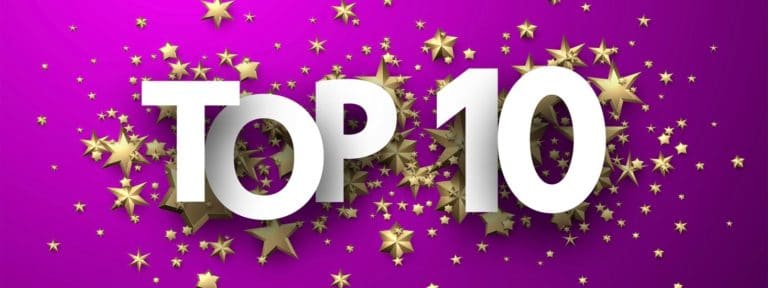
- ICYMI: Bulldog’s Top 10 most popular posts from April
As spring appeared on the horizon, April brought in beautiful weather as well as booming traffic for Bulldog, which had another record month. Our cadre of collaborators drove the clicks last month addressing topics like establishing media relations KPIs, building...
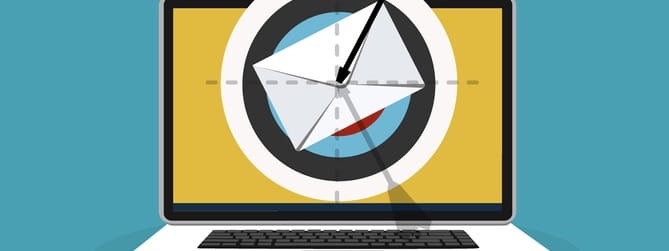
- Email marketing metrics: Key indicators for success and how to leverage them
Email marketing has become one of the most effective and efficient ways for businesses to engage with their audience and drive conversions. However, to truly master your email marketing game, it is crucial to understand and harness the power of key metrics. By...

- 4 ways digital communication tools are shaping brand narratives
In the digital age, communication tools aren't just a necessity; they're a game-changer for your brand's narrative. From enhancing customer engagement to reshaping how brands tell their stories, these tools are pivotal! Let's explore four distinct ways these digital...

We’re Hiring!
Join our award-winning team of whip-smart marketers.
Client Success
- Case Studies
- Digital Designs
- Email Strategy
- Web Designs
- Testimonials
- View All Projects
- Manufacturing
- Senior Living
Recent Case Studies
How email marketing increased aov by 25%, how we used a digital overlay at an in-person event to increase mqls.
- Marketing Hub
- Service Hub
- Operations Hub
- Content Hub
- Commerce Hub

More Partners
Explore more of our top-tier partnerships.

- Marketing Strategy
- Sales & Marketing Alignment
- Reporting & Attribution
- Demand Generation
Public Relations
Content Type
- Assessments
- View All Resources
- Senior Care
Recent Resources
Cmo marketing dashboard, utilizing hubspot service hub to maximize your full customer lifecycle.

Media Tour 101: Tips to Pulling One Off Like a Pro
August 7, 2018
By Jenna Cason
While public relations professionals and the business world at large handle most of their communication digitally these days, there’s still much to be said for face-to-face interaction. In fact, in a survey conducted by Harvard Business Review , nearly all respondents (95 percent) said face-to-face meetings are essential for long-term business relationships. It’s on this premise that media tours were established, and it’s precisely why, in today’s era of digital communication, media tours are still a valued facet of PR strategy.
What exactly is a media tour, anyway?
A media tour consists of several casual one-on-one “meetups” with a company thought leader (often an executive) and a member of the media. The tour is set in a media town—say, San Francisco for tech media, or New York City for business media—and is typically conducted in one or two days. Media tours can be done on the heels of company news or product launches, but more often than not, they’re simply an opportunity for your brand to build rapport and stay top of mind with individual members of the media.
Below are some of my best tips for pulling off a media tour like a pro.
Prepare and brief like there’s no tomorrow
Unlike phone interviews where you can nonverbally (and verbally—thanks, “mute” button!) steer your executive back on track, deskside conversations don’t allow PR pros to be so inconspicuous. It’s important that your thought leaders understand that though these meetups may seem more causal, they’re still talking to a member of the media and should give thought to what they say.
To aid in this, create a briefing book that contains background on each reporter, the beat they cover, and their recently published work. Make sure you include suggested talking points and industry trends your executive can speak to when there’s a lull. If you have company news to discuss, prepare a fact sheet, and if you plan on demonstrating a new product with the media, do a few run-throughs prior to the tour.
Check the calendar
When it comes to booking a media tour, it’s best to avoid the bookends of the week. I’ve found that Tuesdays and Wednesdays usually work best, as you’re less likely to run into media deadlines. Also take a look at upcoming events in the media town and make sure you’re not competing with other happenings that could hinder your ability to secure facetime with reporters.

Overbook meetings
As you know, life with the media is sometimes complicated. You can secure meetings four weeks in advance and confirm them every hour up to the event (this is hyperbole—please don’t do this), and come the day of, someone will inevitably cancel. You simply can’t control schedules, family obligations, and breaking news assignments. The best way to prepare for a last-minute cancellation is by overbooking to begin with. A good media tour usually consists of four desk-side meetings per day. Always book five and hope for four.
Don’t expect immediate coverage
Just because your executive had a wonderful tour, met with 8-10 members of the media, and offered expert insight and commentary on every single topic mentioned, they should not expect a gauntlet of coverage upon their return to the office. The purpose of a media tour is to establish a long-lasting relationship with media members, not necessarily to generate immediate coverage. Don’t think this point goes without saying. You’ll need to bring this up with your thought leader in the early stages of planning (and probably again during the process).
Don’t bring an entourage
Make sure your executive understands that most members of the media don’t have lavish, spacious offices like Miranda Priestly a la The Devil Wears Prada . You’ll likely be meeting in a small meeting room, at a reporter’s cubicle, or even in a coffee shop. Don’t bring more than two or three company representatives (including yourself). Aside from the issue of space, this ensures that your thought leader will form a better one-on-one bond with the reporter.
Pay attention to the details
Media tours require a ton of planning: booking hotels, arranging car services, planning routes, etc. Walk through each day in your head, and make sure you’re not leaving anything out. Print out copies of reservations and directions. Pack an “emergency bag” that includes this information, along with the briefing book, an umbrella, business cards, portable cell phone chargers, and a stain remover stick (I learned this one the hard way).
Eat (yes, I’m including this as a tip)
I once had an executive who would get pretty cranky if he didn’t have a sweet mid-afternoon snack. I learned this purely from observation, so as a sort of experiment, I would bring along a sweet treat when we had an afternoon obligation. And it worked. Every. Time. Media tours are mentally draining, and, frankly, food always helps. Plan time for lunch between desk-side meetings, and throw a few snacks in your bag.
Stay in touch
Not long after the media tour has concluded, it’s important to follow up with any lingering items you promised the media. It’s also nice for your executive to handwrite or email a note to the media. After all, this entire process was about bettering their relationship.
Media tours require a ton of planning and preparation. And a lot of the time, things won’t go as planned. Remember the point of it all is to build relationships between your brand and the media, and you’ll often find that a better relationship has emerged between you and your executive as some sort of beautiful side effect.

Combine inbound marketing and PR to increase visibility, credibility, brand recognition, and the potential to reach your target audience with:
Intelligent Inbound & PR: The Magic Combination for Increased Growth

About the author
Jenna Cason was formerly a public relations specialist at SmartBug Media. She began her career in sports relations for the NFL and has since led PR strategy both in-house and on the agency side. Read more articles by Jenna Cason .
Subscribe to get our new blogs delivered right to your inbox
Other insights you might like.

Marketing vs. PR: What's the Difference?

The Role of PR in Brand Recognition

The Importance of Public Relations in Marketing
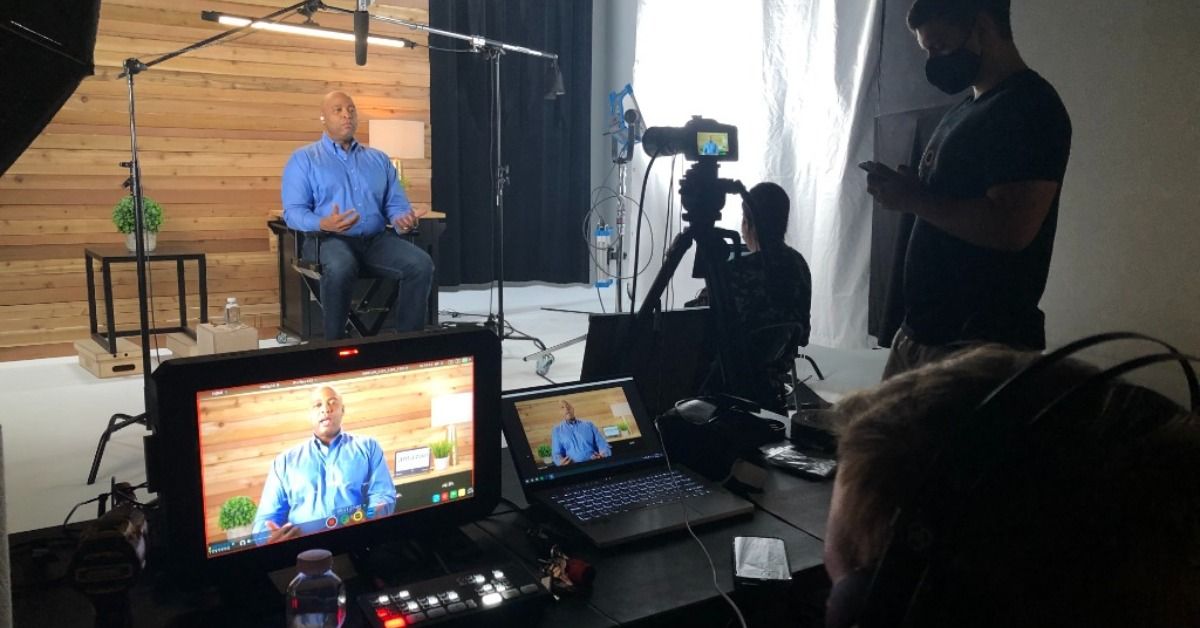

What is a Satellite Media Tour?
August 19, 2021
Simply put, a Satellite Media Tour (SMT) is a great way to amplify your client’s message. From television and radio to digital platforms - a series of back-to-back interviews in a single day will help quickly share your content with audiences across the country. It can happen from a studio or remote location over the course of a few hours.
A question we hear often: Do SMTs still work? Though there is a caveat, the answer is still YES.
Yes, SMTs are a great option for big businesses with multiple advertising streams, small businesses with a big story, or nonprofits looking to share their story. It is important to understand that they are also a direct result of what you put in them. SMTs are not a commercial for a business or product. The key to a successful Satellite Media Tour is to add value for the media. To get coverage, offer a story or access the media can’t get anywhere else.
Tips for a successful Satellite Media Tour
A successful Satellite Media Tour delivers results with top talent, relevant topics, and perfect timing. Follow these tips to make sure a Satellite Media Tour delivers the results you want.
Find the right talent. A-list talent would be great, though, a good SMT partner can help you pull off a successful tour with an author, doctor, blogger, or an industry expert. The spokesperson can make or break a Satellite Media Tour, so choose wisely and be sure they have command of your desired messaging.
Understand how to position brand messaging. That is critical for a successful SMT. Some topics are more appealing to the media than others. Finding a partner you trust to help position your message is imperative to delivering a great editorial message to the right audience.
Consider timing. There are several factors when you are dealing with timing. Does your message tie into current events? Is it a strong evergreen story? The appropriate timing can strengthen your news value. It’s also important to alert the media and pitch them at the proper time.
Manage market expectations. Everyone wants a national morning show booking, and sometimes a campaign aligns to make that happen. But that might not be the right market for your message or for your client. In the television world, local coverage can often deliver great results. In the online world, there are so many platforms that can deliver your message to a more targeted audience. Focusing on a more tailored audience can lead to better results.
Find the right team. When you are making the investment in a Satellite Media Tour, you should have a partner you trust. Team effort is a key ingredient for a successful SMT and crucial to a campaign’s success.
With 35 years of experience, KEF Media has the technical expertise to make your SMT network quality. From beginning to end, we pay attention to every detail so you don’t have to worry about anything. When the SMT is over, you’ll receive detailed reporting until we’ve accounted for every interview booked to know the impacts of your campaign.
Everything PR News
RFP, Public Relations, Marketing, Social Media and more!
SMT PR: How To Do A Satellite Media Tour
by EPR Staff · Published 2015-10-07 · Updated 2023-02-08
They generally involve the spokesperson of your company and a reporter, journalist , or another member of the media. Often, they help draw attention to events, new products, or a particular trending subject.
They draw a lot of attention from the public, so companies considering an SMT should take their time choosing the spokesperson interacting with the media and the best match for the media tour. Companies should make sure the spokesperson has proper media training, because, during the media tour, they become the face of the company. Bear in mind, not every story topic and every spokesperson is a good match for a media tour. It’s important the choice is someone able to convey the company’s message clearly and concisely.
But having a good spokesperson isn’t the only thing furthering a successful media tour. Media tours have evolved to include radio and online interviews. It’s no secret that a large chunk of society is constantly connected to their mobile devices, so companies who incorporate the radio and internet into their tours reach the biggest audiences. It’s also important to be on top of the administrative side of things.
Make sure during the planning stages of your media tour, you have an up-to-date media contact list, a concise pitch written down, and a strategy and timeline in place. Have someone begin building relationships with different media outlets well in advance. Believe it or not, these administrative tasks can make or break a media tour, so it’s worth the effort.
When the day of the media tour arrives, it’s important the spokesperson arrive at the interview site well in advance. Allowing time to go through hair and makeup, and a practice round or two. You can spend all of the time in the world preparing and planning for a media tour.
But if your people aren’t prepared and professional the day of the tour, all of the preparation and planning will be wasted. Being fully prepared the day of the tour is vital.
If done correctly and planned strategically, media tours can be very beneficial. They’re excellent ways to convey a message reaching a wide public base. So if you have a message, event, or product you’re looking to promote, start planning your media tour!
There are a number of choices and good vendors to conduct a satellite media tour.
Tags: insights PR News pr resources strategy
- Next story Forgive Justine Sacco: Let The PR Pro Move On…
- Previous story Bell Pottinger Wins: Bail Extended for Atlaf Hussain’s Money Laundering Charges
You may also like...
Marketing tips for restaurants.
by EPR Staff · Published 2021-10-20 · Last modified 2021-09-16
Marketing Strategies for Software Companies
by EPR Staff · Published 2021-09-29 · Last modified 2021-09-09
Optimizing Lead Generation Ads
by EPR Staff · Published 2022-07-15 · Last modified 2022-06-07
Leave a Reply Cancel reply
Your email address will not be published. Required fields are marked *
Get in touch

Satellite Media Tours
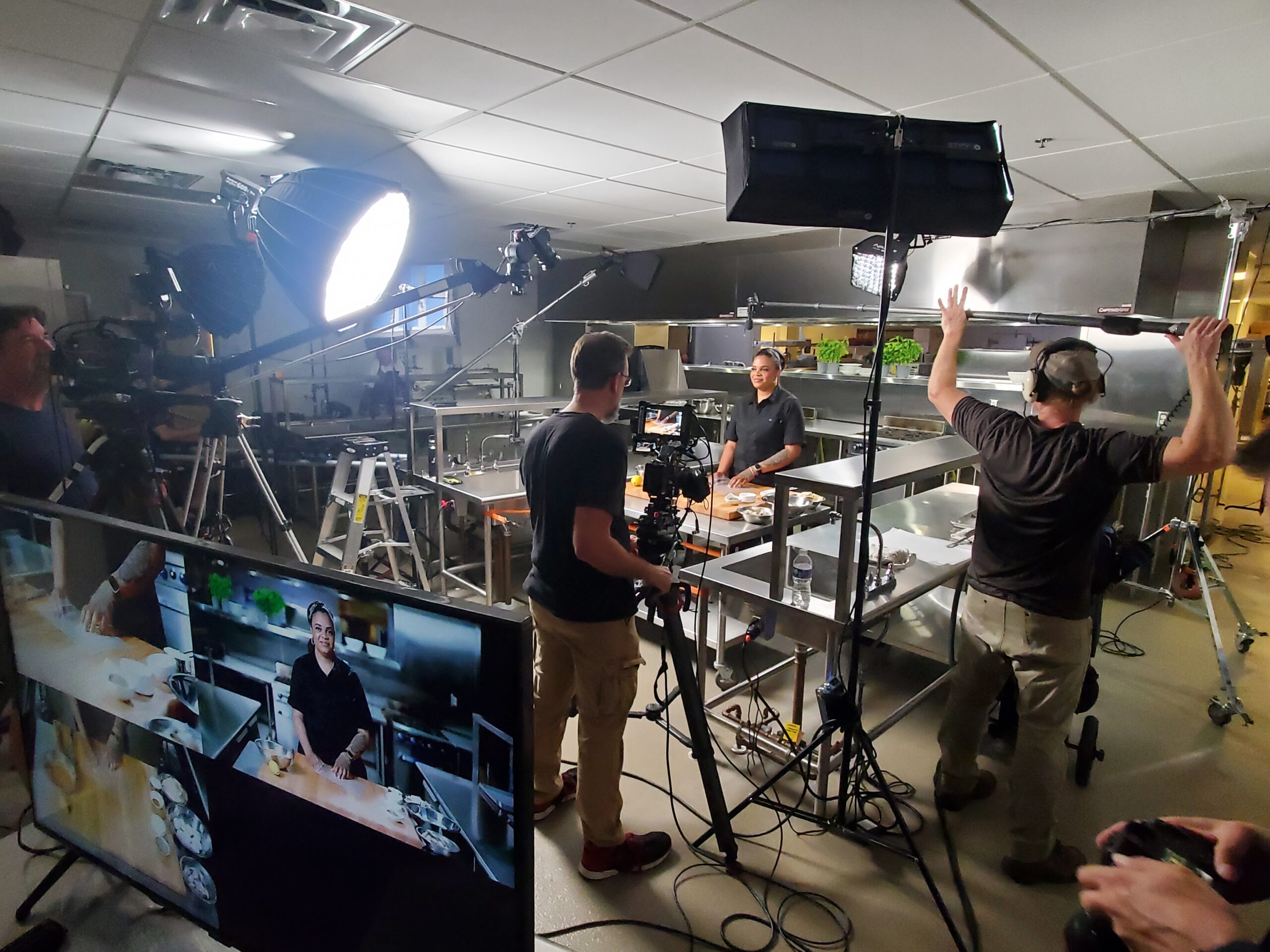
A Lyons Satellite Media Tour (SMT) connects brands, organizations, and subject matter experts with broadcast outlets around the country. We offer three different types of SMTs: in-studio, on-location or virtual (via Zoom). Producing SMTs around the country and around the globe, our expert team always uses its breadth of experience to secure top-tier and targeted interviews to efficiently reach audiences nationwide. We handle all aspects of each SMT campaign, from creation of campaign material and strategic pitching to full production services and broadcast media tracking.
A FEW OF OUR SATELLITE MEDIA TOUR EXAMPLES:
A LYONS PR SATELLITE MEDIA TOUR (SMT) INCLUDES:
- Strategic topic and story development
- Development of pitch material
- Targeted pitching
- Studio, virtual or on-location production coordination
- Technical guidance for virtual SMTs
- Set design and layout
- Full production capabilities
- Interview air-checks
- Final broadcast usage report
For Nearly Two Decades, Our SMT Team Has Booked Interviews With National Outlets And Local Affiliates In Nearly Every Market In The Country On A Regular Basis.
Whether conducted from a studio, on-location or virtually via Zoom, we ensure all details of the Satellite Media Tour are covered, which is why Lyons Broadcast PR counts leading brands and organizations among our long time clients.
Satellite Media Tours can target specific markets and/or a large national audience and in just a few hours, we help our clients reach millions and key audiences across the country. Our experienced team of producers and media relations experts know how to cut through the clutter and get our clients on the air.
Satellite Media Tour companies are not all the same. Lyons PR takes the time to listen to our client’s message, goals and budget parameters to determine what is needed to make the SMT a success.
SATELLITE MEDIA TOUR TIPS & RESOURCES
- What makes a Satellite Media Tour Successful?
- What does a Satellite Media Tour cost?
- Avoid these three things during your next SMT
- Using B-Roll during Satellite Media Tours
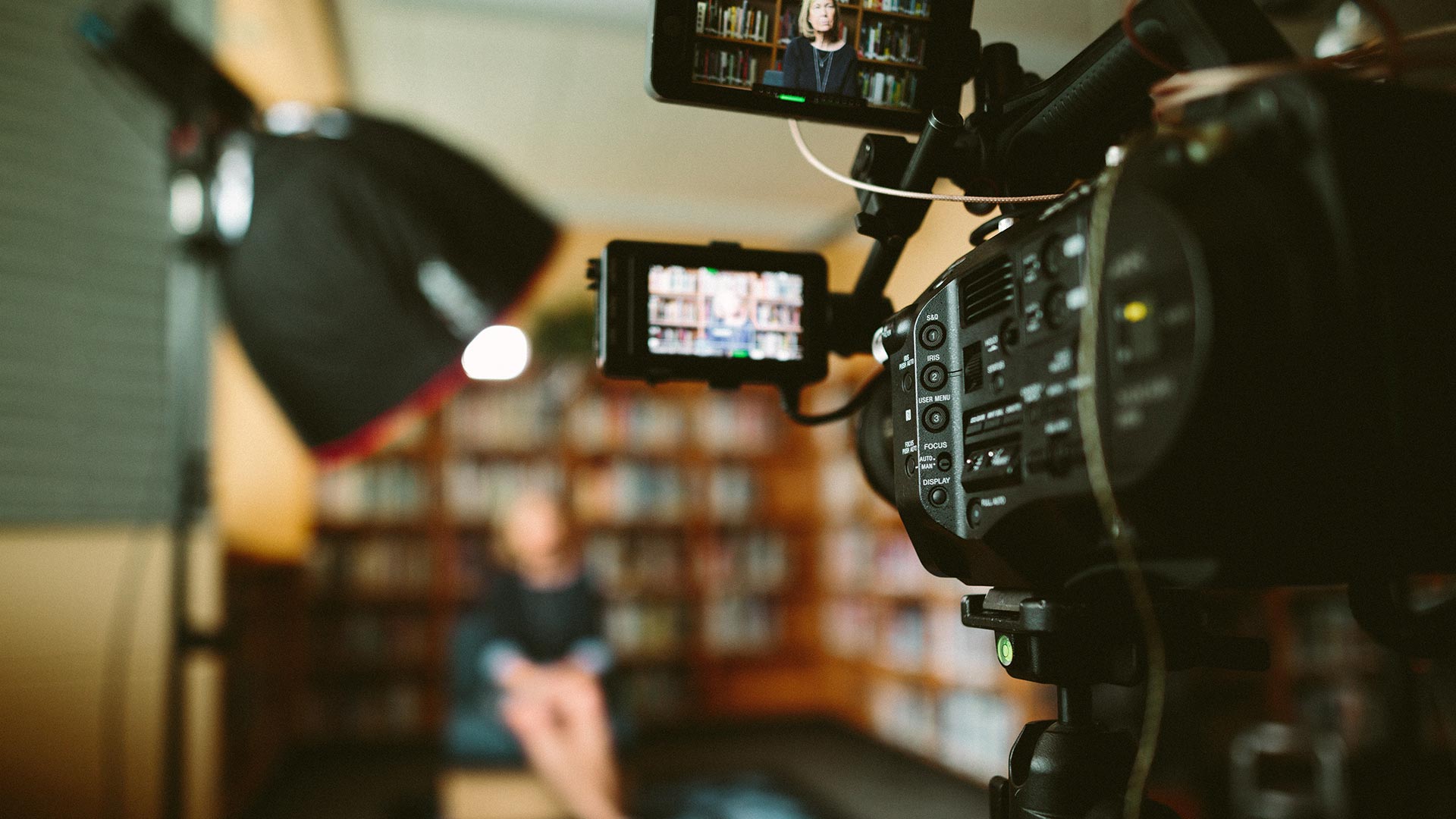
SCHEDULE A SATELLITE MEDIA TOUR
For assistance in planning an effective Satellite Media Tour contact the Lyons Broadcast PR SMT team today.
What is a satellite media tour?

Satellite Media Tours (SMTs) are a PR technique used to connect brands with consumers by conducting a series of television, radio and online interviews. They take place during one day, from a studio or remote location and the timing coincides with morning and afternoon news programs. Both live and taped segments are done during the duration of the SMT, also referred to as a media tour or just tour. Select interviews can be done on another day if the television or radio hosts are unavailable during the tour. While stations are in control of conducting the interviews, suggested messaging and questions are provided to each producer prior to the SMT.
Spokesperson
SMTs have a spokesperson to speak on-camera and on behalf of the brand. Spokespeople can be in-house from the brand, an influencer expert, or a well-known celebrity. It’s important that the talent has a relevant and organic connection with the topic. Make sure that whoever you hire has a natural, easy on-camera presence, and has a fundamental understanding of the SMT topic. Anyone can memorize 4-5 key messages, but you need a talent that can answer ANY related questions and a personal connection to the story never hurts. Some companies will use in-house spokespeople, who have experience being on-camera.
SMT’s can take place within a studio location in most major cities. In fact, larger cities like NYC or LA are typically less expensive as they can offer more competitive rates. Thanks to modern technology, SMTs can also occur from many locations around the world. On-location or remote SMTs offer an interactive or live-from-the-scene advantage, using better visuals and allowing the opportunity to capture additional video content for other uses (social, digital, online, syndicated placement).
Typical SMT Day
SMTs last from 2-6 hours on average and typically consist of 20-30 interviews with TV, Radio, and online stations. Many times, the schedule lineup will include target markets that can also be incorporated. During a series of back-to-back interviews, station anchors and hosts talk with the spokesperson, asking the suggested questions and diving into any relevant topics. SMTs tend to take place between 8:00 AM and12:30 PM EST, as this is the best time for morning and afternoon news programs. During the SMT, additional content should be captured for later distribution (Audio News Releases, Syndicated Video Placements, Online video placements, etc.). Crew call time is typically 1-2 hours before the first interview depending on the amount of hair and make-up required by the spokesperson. Rehearsals are also typically done the morning of the tour, to ensure the spokesperson is comfortable with the messaging and as a final check of the segmented flow with the appropriate use of b-roll. The set is usually finalized the day before the tour during a walk-through. All interviews will sound like they are live, but many will actually be taped and aired later by the stations (many times, airing multiple times).
Markets, Markets, Markets
It is the million-dollar question – what markets can you book? Pitching media requires creativity, timely editorial messaging, a good relationship with the producer, or utilizing a well-known talent. Each SMT should be evaluated based on all of these factors to determine how it will perform. An experienced team should be able to tell you what to expect. Incorporating earned media pitching with strategic paid placements will make for even better results. Long story short – A typical earned only SMT with a good message will have a good mix of Top 25, Top 50, and Top 100 markets for TV and Radio.
Every SMT project is followed by a series of reports. Reports should be updated on a weekly basis and should showcase airings of interviews, updates on content placements and Nielsen audience impression numbers. Online airings are typically measured in UVM’s (Unique Visitors Monthly). UVM’s are typically divided by 30 to get the number of daily unique visitors and then incorporated into the report. Impression expectations should be discussed up front. There should be ZERO surprises on an SMT report.
Typical SMT Timeline
6 weeks out – Messaging is finalized, spokesperson is identified, media materials are being crafted, editorial direction of the SMT date is being secured. If a survey is used, this is the time it will be fielded. B-roll discussions start. 5 weeks out – Media alert is reviewed and approved so media pitching can begin to secure interviews for the day of the SMT. 4 weeks out – First SMT booking report is delivered to the client. 3 weeks out – Messaging for the SMT execution is finalized and incorporated into the media alert for the client and/or talent to review. Booking reports continue to be delivered. 2 weeks out – Set design conversations begin. Brand items to be on set are sent to studio. 1 week out – Media training call with brand and spokesperson. Day before the SMT – Studio walk through, set design execution, final media training with spokesperson. Day of SMT – Crew call 1-2 hours before first interview. 5-6 Days after SMT – First SMT airing report sent to client with links to interviews. After the SMT – SMT reports are delivered until all airings have been accounted for and links are sent to interviews as available
Five Important Takeaways
- In the PR world, a ‘national hit’ is the holy grail of media success, but when it comes to building a brand’s reputation, local media provides an essential ROI. SMTs allow brands to tap into local market news, and stories can be customized to specific audiences.
- Messaging is critical to the success of the SMT. Keep in mind that PR messaging is NOT meant to be heavily branded and commercial in nature. You want to emulate a news segment. Consider adding an online survey to uncover media angles and talking points that help to position brand messaging with editorial flavor.
- Don’t forget timing. A BBQ story in January will fall flat and back-to-school in November misses the boat.
- A strong and/or well-known spokesperson can guarantee better results. A good SMT company will be able to help you evaluate potential spokespeople or even find one for you. You DON’T always have to have a celebrity talent to guarantee success if you have a great editorial message.
- Consider additional paid options to guarantee to hit your target markets. Some markets just DON’T accept SMTs and the only way to get into them is to pay for the spot.
Subscribe To Our Email List
- Perspectives
- Open Positions
Atlanta Office 420 Plasters Avenue Atlanta, GA 30324 404-870-0323
New York Office 218 West 40th St. 2nd Fl. New York, NY 10018 212-201-4200


Remember Me
- Media Relations
How to Conduct a Media Tour: A Trio of PR Pros Provides Tips
By Seth Arenstein
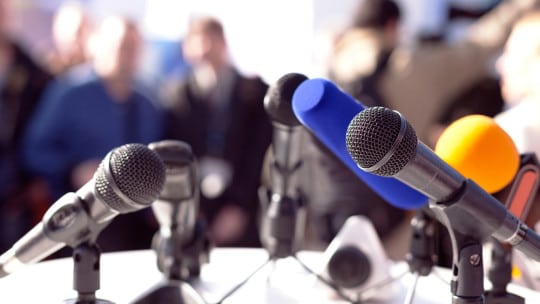
In this world of always-on, 24-7 news cycles, some of the basics of PR can seem passé and old school. Yet when journalists are asked in surveys what they want from PR professionals, the basics often come out on top : timely news and other assets (photos, video clips) that are useful to the journalist’s readers, interview opportunities with important players and prompt responses to follow-up questions about the pitched topic. Social media/digital technology can handle all this, of course, but there's nothing like a face-to-face meeting or interview to establish a relationship with a journalist. And as social media influencer Brian Fanzo says, "Social media was not built to replace a handshake."
Enter the media tour, one way to get your brand’s story and its executives in front of journalists in multiple locations.
Several themes emerged when we asked PR pros to provide nuts-and-bolts tips and must-haves for conducting media tours today.
All our pros urged communicators to do as much planning as possible. In other words details, details, details. Ned Barnett ( photo, left, below ), fellow, PR and marketing, the American Hospital Association , prepares a backgrounder that includes the company’s narrative, the executives’ personal background, reproducible graphic images–logos plus head-and-shoulder shots of the executives, at a minimum–and a summary of why the media tour is taking place.

In addition he urges PR pros to have printed press-kits or product-intro hand-outs, but always also have them stored in a thumb drive, preferably monogrammed with the brand’s logo. Another tip: use high-capacity thumb drives, 64 gigs at least – or as big as possible. “Do this because the editor or reporter you meet with is more likely to keep something like that if it has real utility, hence the high capacity and the branding logo.”

Below are edited versions of other tips they offered:
- Go in with a goal, and stick to it. It’s tempting to try to get too much from reporters during a media tour. Know the headlines you want, and build toward them.
- Diversify your offer to reporters. Give them options of executives to talk to, visuals to capture and how to capture them. Understand that reporters are expected to deliver across mediums, so prepare for that and provide the assets they need.
- Avoid over-packing the tour schedule to the point where you can’t make time to meet with an important journalist later in the day, if that better accommodates his / her schedule.
- Do your homework. Familiarize yourself with the reporters you are scheduled to speak with. Take a look at previous articles (especially their most recent) and get a sense of their interests and stances. And know the reporters’ outlets. Take time to understand publications’ audiences and know how your story relates to the needs of its readers.
- Don’t be afraid to let a reporter know that you don’t have the answer to a question. Honesty is the best policy, and it’s better to take this route vs. risking a response that could be incorrect or contradict messaging.
- Always have something new to say to the media, such as a new product, or the results of an online survey. Never conduct a media tour for the sake of doing a media tour.
- Consider kicking off a media tour with a press conference, especially if you have time-sensitive news. Any even tangentially-national news story that touches on the government should be launched with a press conference at the National Press Club in Washington. Any Silicon Valley-like tech story should begin with a press conference in San Jose or San Francisco.
- Regardless of your primary media targets, while in a major metro area always try to schedule interviews on satellite radio and cable news, which means having a generic hook as well as a more focused one.
- Always have a senior PR expert accompany your executive to handle on-site arrangements, to prep the executive before each meeting and debrief her after each media interview and to fix gaffes when they happen, which they always do.
- Have a PR pro back in the office to handle last-minute bookings of new interviews.
- Budget permitting, avoid cabs and hire a car service to focus on your transportation.
- Integrate a virtual media tour for those who are outside your travel destinations. Their failure to be on your itinerary doesn’t diminish their value to your brand. A virtual tour should come immediately after the real tour. If you have a choice avoid having the executive bouncing between the two media tours.
- Follow up interviews immediately with a note. Provide additional information requested, mention key talking points from the interview and, most important, say thank you! Use a digital recorder to dictate your note if your schedule is too busy. The follow-up must be done within 24 hours or you’ll look hopelessly bush league.
Seth Arenstein is editor of PR News. Follow him: @skarenstein
[email protected]
No related posts.
- PR Roundup: Commencement Crisis, Boy Scouts Rebrand, Media Consumption Habits
- Guess What? PR and Motherhood Aren’t That Different
- PR Strategies for Olympics Sponsors Battling Negative Media Coverage
- Learning from Roku’s Breach Communication Shortcomings
- Customizing AI GPTs to Optimize PR Business Processes

RADIO MEDIA
Broadcast Media | Public Relations

- RADIO MEDIA TOURS (RMT)
- AUDIO NEWS RELEASES (ANR)
- SOCIAL MEDIA INTEGRATION
- DIGITAL NATIVE ADVERTISING
- INFLUENCER MARKETING
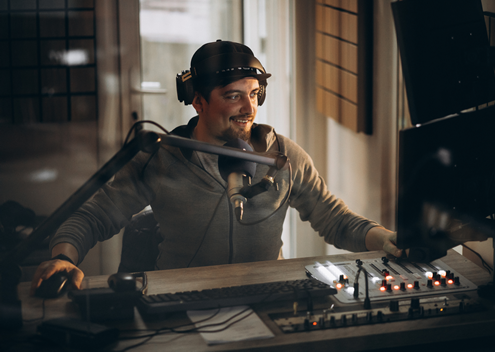
Radio Media can help you assemble a calendar of pre-scheduled interviews – of up to 15 minutes in length – at a series of carefully targeted radio stations, allowing your message to get maximum potential exposure.
BENEFITS OF PARTNERING WITH US FOR YOUR RADIO MEDIA TOURS
When you partner with Radio Media to coordinate your radio media tour, you’ll receive:
- A carefully created schedule designed to reach the markets, radio formats and audiences that are the best targets for your message…
- Maximum efficiency: we work hard to make sure your spokesperson’s time is used effectively and in a way that generates maximum on-air time for your message…
- Digital files from your interviews, allowing you to showcase your message on your web site or via your own marketing campaign…
- Comprehensive reporting showing you verified audience members in each market so you can best understand the reach and potential impact of your campaign…
WHAT’S INCLUDED
- Complete written pitch notification (subject to your approval)
- Comprehensive plan including targeted list of appropriate stations and outlets
- Personalized pitching via phone and communication of background information to interested target stations
- Easy-to-follow schedule that incorporates booking interviews during times you’ve designated and includes confirmation emails 24 hours in advance of appearances
- Issuing a broadcast alert
- Media training session for your spokesperson to ensure they are well prepared to deliver your message and answer questions
- Teleconferencing with a Radio Media moderator, which you can listen in on
- Audio copy of each interview from your media tour
- Verification of usage for each station participating in the tour
- And a comprehensive report detailing broadcast usage information from each media outlet
WHAT’S NEEDED
- Background information on your company and message, including a press kit, fact sheets, press releases and any relevant articles to help write the script
- A list or schedule detailing your spokesperson’s availability with allowance for approximately fifteen minutes of recording time via phone
- A lead time of 24 hrs before campaign launch
- Demographic information and a list of geographic areas you wish to target
- 847-299-9500
- Affilate Login
MediaTracks Communications
Producer of syndicated radio public affairs programming, and a leader in radio and audio services for the public relations industry based in Chicago, IL.
COVID-19: MediaTracks Is Ready To Help.
Our half hour public affairs shows are available on a short-term basis.

Radio terminology, aka radio jargon, is a language all unto itself — if you’re new to radio, don’t be surprised if you don’t understand the acronyms and vocabulary used by the industry. Whether you work for a radio station, a radio syndicator, or work at an advertising, marketing or public relations agency, you are going to hear a multitude of radio terms.
If you’re new to the industry, you may find yourself nodding in agreement, and feel like a “deer in the headlights.” Don’t worry; our brains are like sponges. The more we hear radio terminology, the more we’ll begin to sort out this radio jargon, and peer-to-peer conversations will make sense. Here’s our list of radio terms.
ABC — American Broadcasting Company.
Acapella — a song or jingle featuring voices without accompanying music.
Ad — short for advertisement.
Ad-Lib — when a live on-air DJ or show host concocts/invents/wings it when the programming experiences a technical difficulty, or a guest or co-host goes “off-script.”
Adjacencies — programs either immediately before or after a specific program, such as sports programming.
AFTRA — the acronym for the American Federation of Television and Radio Artists
AM — short for Amplitude Modulation, where the radio signal varies by amplitude (oscillation) of the radio wave. AM radio stations broadcast on frequencies of 530 to 1710 kHz.
Arbitron — the radio ratings company acquired by Nielsen in 2013. Nielsen now supplies both radio and television audience reports.
ASCAP — acronym for the American Society of Composers, Authors, and Publishers who protects their members’ music copyrights, whether broadcast or in live performances.
Average quarter hour (AQH) — a term used by Nielsen to describe the average number of radio station listeners in a 15-minute time period.
Back Announce — when the DJ chats about the song that has just aired.
Back Time — a technique where the DJ and the programming director or other staff member calculate which song to play before a break or at the end of the show, so the song doesn’t end too soon or go over into the program break.
Barter/Contra Deal — a deal struck between a radio station where advertising is traded for food, concert or sports tickets, travel, hotel space, or other goods or services.
Bed — underlying audio that a DJ talks over, usually used when transitioning between tracks or introducing a song.
Broadcast Placement Report — a report showing the stations who receive and use an audio news release, sound bite line, PSA, or interview in a radio media tour or satellite media tour.
Broadcast Usage Update — a report that confirms the airing of audio news releases, sound bites, PSAs, or interviews from a radio media tour or satellite media tour.
Brokered Programming — time slots sold by a station to independent producers who create their own programming; the party who buys the time and produces the program to air; for example, a foreign language program on a mostly English language radio station.
Bumper Music — music/song before or after a commercial break.
Cans — short for headphones.
Cart — a storage system where radio spots, PSAs, and other announcements are stored and assigned a number for identification.
CBS — Columbia Broadcasting System.
CHR — contemporary hit radio format, formerly known as Top 40.
Com Prod (Commercial Production) — the department/studio area where radio spots and announcements are produced.
Cost Efficiency Factor (CEF) — the cost per thousand to reach 1,000 listeners with just one spot, compared to 1,000 listeners on another station with a similar demographic.
Cue Lights — the lights seen just outside the broadcast studio that signal red to stand by and green to indicate “live and on-air.”
Cume — abbreviation for cumulative audience, the number of households or persons listening to a particular radio station during a specific time period.
Churban — a hybrid radio format, comprised of CHR (contemporary hits) mixed with urban (hip hop and/or R&B).
Daypart — the different times of the day, for example — morning drive (usually 6 am to 10 am) or afternoon drive (typically 3 pm to 7 pm).
Dead Air — an unscheduled “silence” caused by equipment failure, server problems, or a host or DJ arriving late at the studio.
DMA — Designated Market Area, utilized in Nielsen reports. Each county in the U.S. is assigned to a specific DMA.
Donut — a short musical piece, that begins with singing, contains only music in the middle (usually for script to be read over it), and ends with singing.
Ethnic Radio — radio that broadcasts in a language other than English in the United States.
Final Broadcast Usage Report — a report that verifies running an audio news release, sound bite, PSA, radio media tour interviews or a satellite media tour interviews, and includes audience, frequency of runs, and station listenership metrics.
FM — abbreviation for Frequency Modulation; the radio signal is transmitted through changes in frequency. FM radio stations broadcast on frequencies from 88 to 108 MHz.
Format — the genre of music programming for each radio station; country, pop, adult contemporary, news/talk, and urban are format examples.
Format Clock — a specially-formatted clock that shows key programming elements including music, news breaks, commercial breaks, and weather.
Frequency — the number of times that a listener can hear an advertising spot with the assumption that hearing a message more frequently may entice the potential customer to purchase.
Frequency — the dial position of the radio station. Example: 100.3 FM
Gross Rating Points (GRPs) — a measurement of how well a station’s reach serves a client’s demographic market; a GRP is 1% of the market’s population.
Jingle — a custom-written short tune used for advertising and/or branding.
K — the first letter of a call sign for a radio station located in the U.S., generally west of the Mississippi.
Link — a short blurb about what’s coming up next.
Log — a written record of what airs at a radio station each day, including the music played, the commercials aired, and the engineering log that shows the transmitter status.
Major market — the top 25 cities in the U.S. by population
Mixdown — a mix of multiple music tracks, carefully blended to be not too loud and not too soft.
NAB — the National Association of Broadcasters, a trade association comprised of radio and television broadcasters.
NBC — National Broadcasting Company.
NCS — Nielsen Coverage Study, used in both radio and television ratings.
News Cycle — typically, the reporting of a particular media story, within a 24 hour period from the first instance to the last.
Nielsen Company, LLC — the company that provides radio and television listenership and viewership audience reports.
On the Beach — slang for being unemployed.
Over Running — a situation where the song or the DJ runs longer than the planned end time.
Payola — an illegal practice of paying a station to air a song during regular programming without the station’s disclosure that the song was sponsored content.
P.D. — the Program Director, the person who oversees the sound and music selection which helps differentiate the station from other stations in the market.
Playlist — a formalized list of songs aired on a particular day or week.
Pre-Record — recording an audio segment before broadcasting it on air.
Production Studio — like Com Prod, the department/studio area where radio spots and announcements are produced.
Promo — an abbreviated form for promotional announcement, a type of advertising to publicize an event or personal appearance.
PSA — Public Service Announcements run at no charge for a non-profit organization for the wellbeing of a community, like a “Don’t Drink and Drive” campaign.
RAB — Radio Advertising Bureau.
Radio Frequency — the dial position or frequency on which a radio station is broadcast, such as 97.1 FM or 960 AM. (Same as Frequency, above)
Ramp — the introduction/instrumental opening to a song.
Ratings — the ranking of a station calculated as a percentage of people who listen.
Remote — a live broadcast outside of the station’s studio, usually at a client’s location or at a special event.
Segue — the smooth transition from one song to another or transition from one program to another.
Sign-On and Sign-Off — a formalized announcement that a radio station is “officially” on the air, giving their call letters and frequency; the same procedure is repeated at the end of the broadcast day with a “sign-off” message. If a station broadcasts 24/7, they do not sign-on and sign-off.
Sound Bite — a snippet or short audio clip of an interview that can be used for news or promotional purposes.
Sound Effects — Pre-recorded sounds to create special effects in a radio spot or promotional announcement — sounds such as frogs croaking, sirens or a baby crying.
Spot — a radio (or television) commercial.
Sweeper — a jingle to help brand the radio station and played between two songs.
Syndicated — programming produced by an independent producer or a network for sale or barter to radio stations.
Syndicator — an independent company that produces and distributes programming for sale or barter to radio stations.
Talk radio — a radio format, moderated by a DJ, where listeners call in to talk about the topic of the day.
Targeting (aka Target Audience Demographic) — the process of selecting radio stations by their listening audiences to reach a specific demographic group.
Total Number of Stations and Network Affiliates Airing — the total number of individual stations who broadcast a program or story. For a cluster (a group of stations within a single market), airing on one station counts as one; if the broadcast is aired on a sister station, this counts as two.
Total Number of Airings — the sum of airings for a news or feature story, or a radio commercial.
Total Listenership — the total audience that heard a message derived by adding AQH (Average Quarter-Hour persons) for every network and station that broadcast a story.
TX — abbreviation for transmission.
Voiceover — a narrative spoken by an unseen person to accompany video programming, a news clip or a commercial.
W — the first letter of the call sign for a radio station in the United States, generally east of the Mississippi.
X — the first letter of the call sign for a radio station broadcasting from Mexico
- Recent Posts
Become a Broadcast Media Insider
Join to receive our FREE industry insights, trends, tips and more. Email updates sent monthly. No-hassle unsubscribe.
- Type Your Name *
- Type Your Email *
- Media Services
- All Radio Services
- Audio News Release (ANR)
- Radio Media Tours (RMTs)
- Public Service Announcements (PSAs)
- Custom Feed Audio News Releases
- Spanish Language Audio News Release
- Urban Reach
- Start a Project

2250 E. Devon Avenue, Suite 150 Des Plaines, IL 60018
847-299-9500 [email protected]

IMAGES
VIDEO
COMMENTS
A Radio Media Tour (or RMT) is a series of pre-arranged, back-to-back, 10-15 minute interviews between your spokesperson and 15-20 targeted radio stations. RMTs are efficient, cost-effective ways to get optimal radio exposure for your message. START A CONVERSATION.
This video explains how a radio media tour works, what we need from you to get started, and what types of updates you will receive from us.
A satellite media tour is a series of TV, radio and online interviews conducted in a single day from a single location. It allows your spokesperson to be interviewed by multiple outlets around the country without the expense of traveling to each market. Interviews are typically booked in 5-10 minute windows. How long do satellite media tours last?
Summary. In conclusion, Satellite Media Tours are a powerful PR tool for amplifying your brand's message, reaching target markets, and making a lasting impact on your audience. By carefully selecting the right spokesperson, location, and SMT company, and meticulously preparing for your event, you can ensure the success of your SMT.
A radio media tour a series of pre-arranged, 10-15 minute interviews between your spokesperson and 10-20 targeted radio stations. RMTs are efficient, cost-effective ways to get optimal radio exposure for your message. They can be a stand alone effort, or more often the case - part of a larger media campaign that includes TV and social media.
COVID-19: MediaTracks Is Ready To Help. Our half hour public affairs shows are available on a short-term basis. First Impressions of a Radio Media Tour. For many of today's generation, the radio industry is full of mystery. We know about print, television, and social media, but radio has seemingly faded into the background.
YOUR RADIO MEDIA TOURS. When you partner with Radio Media to coordinate your radio media tour, you'll receive: A carefully created schedule designed to reach the markets, radio formats and audiences that are the best targets for your message…. Maximum efficiency: we work hard to make sure your spokesperson's time is used effectively and ...
Radio Media Tour (RMT) A radio media tour is one of the most cost-effective tactics in terms of reach, network penetration and targeting audiences. So whether you have a news, consumer feature or entertainment story, a Boom radio media tour will help you to gain exposure for your message and extend the reach of your campaign.
7. Pay attention to set design. TV and online video is all about the visuals. Ask to see some of the SMT partner's past set options. If they are all similar (i.e. a monitor with a logo/image next to the spokesperson), you may want to check out some other potential partners.
An analysis of two years of SMT bookings and conversations with media professionals tell us this: for a standard tour with the main target of television bookings, we recommend 8 a.m. to noon Eastern. Radio Media Tours book best between 7 a.m. and 11 a.m. Eastern. Internet Media Tours book best when done between 11 a.m. and 2 p.m. Eastern.
A Radio Media Tour (RMT) is a time-efficient and cost-effective method for your spokesperson to spread your organization's message to targeted regions or throughout the country in just a few hours. The leading Radio Media Tour company for earned media. Radio Media Tours consists of a series of back-to-back phone interviews, effectively reaching millions of
Make sure your executive understands that most members of the media don't have lavish, spacious offices like Miranda Priestly a la The Devil Wears Prada. You'll likely be meeting in a small meeting room, at a reporter's cubicle, or even in a coffee shop. Don't bring more than two or three company representatives (including yourself).
At KEF Media, we understand the nuances of the Satellite & Radio Tour, the subtleties, and so we are here to offer a hand. Before tasking the internal broadcast team with an SMT, there are three reasons to reach out to us first. 1. Free Customized Solution Brainstorming. We prefer to work backward with you when projects are brought to our ...
August 19, 2021. Simply put, a Satellite Media Tour (SMT) is a great way to amplify your client's message. From television and radio to digital platforms - a series of back-to-back interviews in a single day will help quickly share your content with audiences across the country. It can happen from a studio or remote location over the course ...
Leave White Space-- If you're setting up one day of media meetings as part of your tour, you'll likely feel the urge to pack the day with as many meetings as possible. But a packed schedule can lead to rushed meetings, late appearances, and stress. A realistic tour more likely includes a pair of morning meetings, a break for lunch, and a pair ...
A Radio Media Tour (RMT) is a series of 10-minute radio interviews that allow your spokesperson to be interviewed by stations and networks across the country. Our typical RMT averages between 20 - 30 interviews. Newsworthy Topic . Research current news to determine best news "hook"
An SMT is a series of interviews spread out over the course of a number of hours, yet conducted generally from the same location. They generally involve the spokesperson of your company and a ...
A Lyons Satellite Media Tour (SMT) connects brands, organizations, and subject matter experts with broadcast outlets around the country. We offer three different types of SMTs: in-studio, on-location or virtual (via Zoom). Producing SMTs around the country and around the globe, our expert team always uses its breadth of experience to secure top-tier and targeted
Definition. Satellite Media Tours (SMTs) are a PR technique used to connect brands with consumers by conducting a series of television, radio and online interviews. They take place during one day, from a studio or remote location and the timing coincides with morning and afternoon news programs. Both live and taped segments are done during the ...
Satellite Media Tours. Chuck E and his team have booked over 5,000 satellite media tours and provide the best results in the broadcast public relations industry. A Satellite Media Tour allows a spokesperson to be interviewed via satellite by as many as 30+ stations from around the country.
And as social media influencer Brian Fanzo says, "Social media was not built to replace a handshake." Enter the media tour, one way to get your brand's story and its executives in front of journalists in multiple locations. Several themes emerged when we asked PR pros to provide nuts-and-bolts tips and must-haves for conducting media tours today.
SERVICES. As one of the most proven effective outlets available, radio offers you a chance to connect with listeners in a meaningful way. Radio Media can help you assemble a calendar of pre-scheduled interviews - of up to 15 minutes in length - at a series of carefully targeted radio stations, allowing your message to get maximum potential ...
AFTRA — the acronym for the American Federation of Television and Radio Artists. AM — short for Amplitude Modulation, where the radio signal varies by amplitude (oscillation) of the radio wave. AM radio stations broadcast on frequencies of 530 to 1710 kHz. Arbitron — the radio ratings company acquired by Nielsen in 2013.